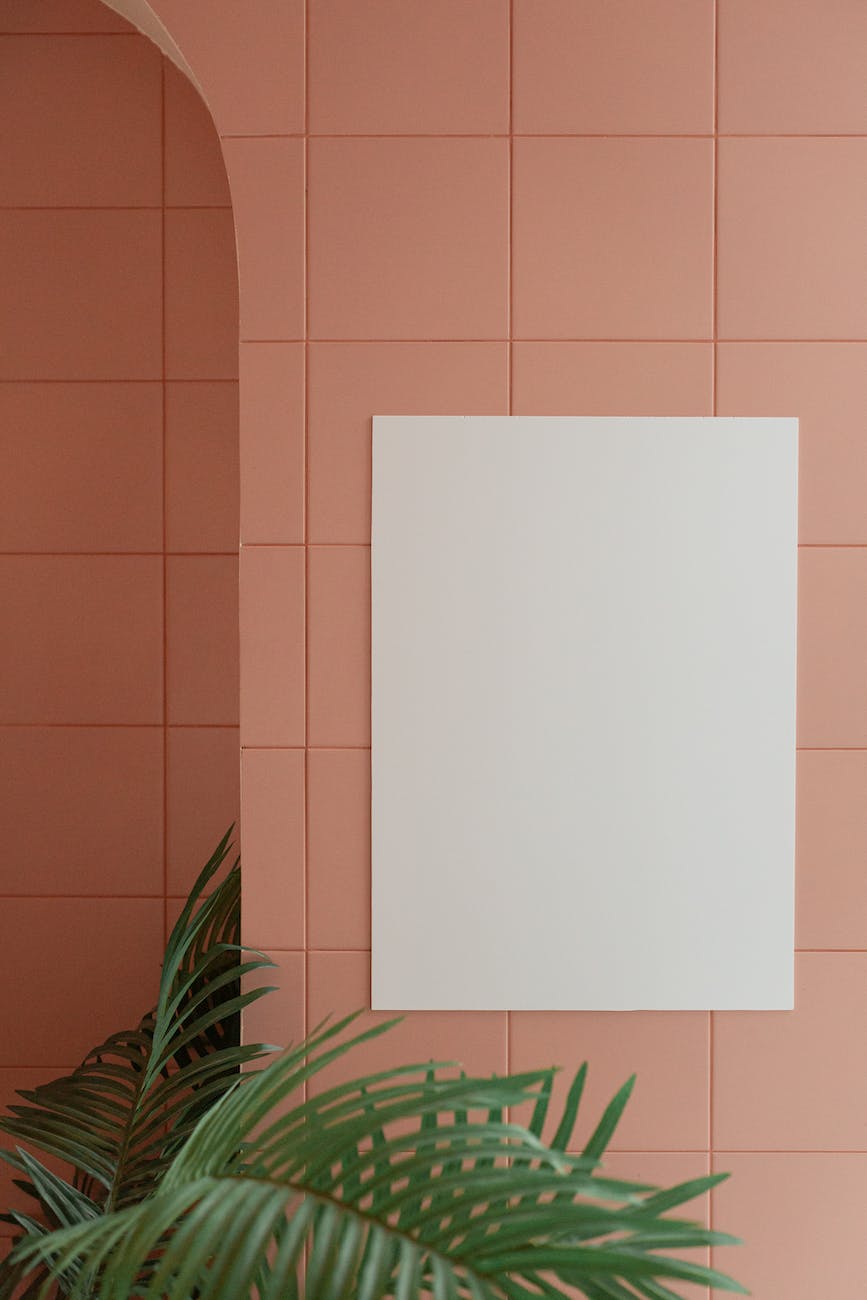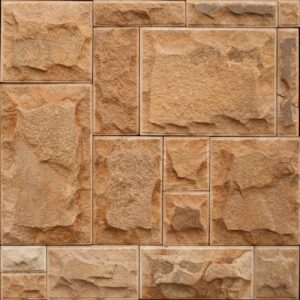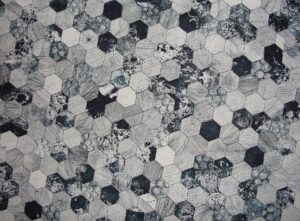The Art of Tiling
Tiling is an art form that has stood the test of time. From ancient civilizations to modern design, tiles have been a vital part of architectural and interior design. In this section, we’ll delve into the basics of tiling and its significance in interior design.
Understanding the Basics of Tiling
Tiling is more than just placing pieces of ceramic, stone, or glass on a surface. It’s a process that involves careful planning, precise calculations, and skillful execution. It starts with choosing the right tiles for your space, factoring in aspects like size, color, texture, and material. This is followed by preparing the surface for tiling, ensuring it’s clean, smooth, and ready for adhesive application.
The actual tiling process involves spreading tile adhesive on the surface using a trowel, placing the tiles, and leaving them to set. The final step is grouting, where a mixture is applied to fill in the gaps between tiles, providing a neat and finished look. To know more about grouting techniques, you can check our article on grouting techniques for perfect finishes every time.
For a more in-depth understanding of tile adhesives, we have a comprehensive guide on understanding tile adhesives.
The Importance of Tiling in Interior Design
Tiling plays a crucial role in interior design. It’s not just a practical solution for surfaces that require durability and easy cleaning, but it’s also a powerful design element that can significantly influence the aesthetics of a space. Tiles can add color, pattern, texture, and a sense of luxury to interiors.
In the kitchen, for instance, a well-chosen tile can serve as a beautiful and functional backsplash, protecting the wall from splashes while also adding character to the room. You can explore more about this in our guide on choosing the right tile for your kitchen.
In bathrooms, tiles are essential for water resistance, but they also provide an opportunity to create a relaxing and spa-like atmosphere. For expert advice on how to tile small bathrooms, check out our post on maximize your space: expert tips for tiling small bathrooms.
Whether used on floors, walls, or decorative accents, tiles offer endless design possibilities. With the right tile and design, even the most challenging spaces can be transformed into something beautiful and unique. This is where innovative tiling solutions for challenging spaces come into play. Stay tuned as we uncover some of these innovative solutions in the sections to come.
The Challenge of Tiling in Difficult Spaces
Tiling can transform a space, providing both aesthetic appeal and functional utility. However, when it comes to tiling challenging spaces, the task becomes considerably more complex. Recognizing the unique challenges in different spaces and being aware of common problems in tiling difficult spaces can help you better plan and execute your tiling project.
Recognizing the Unique Challenges in Different Spaces
Each space presents its own set of challenges when it comes to tiling. Understanding these challenges can guide your approach to finding innovative tiling solutions.
For instance, small spaces like bathrooms can be difficult to tile due to limited maneuverability and the need for precise tile cuts to fit around fixtures. For tips on tiling in small spaces, see our article on maximize your space: expert tips for tiling small bathrooms.
Irregularly shaped spaces, such as rooms with curved walls or unusual architectural features, demand creativity in tile layout and installation. Our article on transforming spaces with creative tiling patterns offers insight into tackling such spaces.
Different surfaces also pose unique challenges. Tiling on wooden surfaces, for instance, requires understanding of specific adhesives and preparation techniques to ensure a durable result. For more on this, refer to our guide on understanding tile adhesives.
Common Problems in Tiling Difficult Spaces
Regardless of the space, certain common problems can arise when tiling. Recognizing these problems can help you anticipate them and incorporate solutions into your tiling plan.
- Inadequate Surface Preparation: The success of a tiling project heavily depends on the preparation of the surface. This includes cleaning, leveling, and priming. Failing to prepare the surface properly can lead to problems such as loose tiles and uneven surfaces.
- Incorrect Tile Selection: The type of tile selected should be appropriate for the space and its intended use. For instance, non-slip tiles should be used in wet areas like bathrooms. Check out our guide on choosing the right tile for your kitchen for more on tile selection.
- Poor Layout Planning: The tile layout should be planned beforehand to ensure a pleasing aesthetic and minimal tile cutting. Poor planning can lead to wastage of tiles and an unattractive finish.
- Inadequate Grouting: Grout provides stability and prevents moisture infiltration. Improper grouting can lead to loose tiles and water damage. To learn more about grouting techniques, visit our article on grouting techniques for perfect finishes every time.
- Lack of Expansion Joints: Tiled surfaces need expansion joints to accommodate movement and prevent cracking. These are especially important in large tiling projects and areas prone to temperature fluctuations.
By understanding these challenges and problems, you can better equip yourself to navigate the complexities of tiling in difficult spaces. Stay tuned for our next section, where we’ll explore innovative solutions to these tiling challenges.
Innovative Solutions to Tiling Challenges
When it comes to tiling, overcoming challenges posed by unique spaces and irregular surfaces can seem daunting. But thanks to the advent of new techniques and technology, these hurdles are becoming easier to navigate. This section delves into the innovative tiling solutions for challenging spaces.
Exploring New Techniques in Tiling
In the world of tiling, a combination of creativity and practical knowledge can lead to the development of new techniques. For instance, the use of tile leveling systems is gaining popularity as a tool to ensure tiles are laid evenly, particularly on uneven surfaces. This can be a game changer in spaces where precision is essential. For a deeper understanding, check out our article on tile leveling systems explained: achieving professional results.
Another innovative technique is the strategic use of tile patterns to give the illusion of a larger space, a trick that works especially well in small bathrooms or kitchens. This approach can completely transform a cramped room, making it appear larger and more inviting. To explore this further, visit our guide on transforming spaces with creative tiling patterns.
Lastly, the art of grouting has evolved significantly over time. Modern grouting techniques can enhance the finish of a tiling job, making it look clean and professional. Learn more about these techniques in our article on grouting techniques for perfect finishes every time.
The Role of Technology in Tiling Solutions
Technology plays a pivotal role in finding innovative solutions to tiling challenges. Thanks to advancements in digital tools and software, it’s now possible to visualize the final look of a tiled space before a single tile is laid. This can be incredibly helpful in planning the layout, especially in challenging spaces with irregular shapes or limited area.
Another technological evolution in the tiling industry is the development of more effective tile adhesives. Modern adhesives can firmly fix tiles on a variety of surfaces, including those that were previously considered unsuitable for tiling. Dive deeper into this topic in our guide on understanding tile adhesives: a complete guide.
In addition, eco-friendly tiling options are becoming increasingly available. These sustainable choices are not only good for the environment, but they can also be aesthetically pleasing and durable, making them a great choice for any space. Learn more about this in our article on eco-friendly tiling: sustainable choices for your home.
Innovation in tiling, whether through new techniques or the use of technology, continues to make it easier to conquer the challenges of tiling in difficult spaces. By embracing these solutions, you can create beautiful, functional spaces, no matter how unique or challenging they may be.
Case Studies of Innovative Tiling
When it comes to dealing with complex spaces, innovative tiling techniques can make a significant difference. The following case studies showcase how innovative tiling solutions have transformed challenging spaces.
Tiling in Small and Constrained Spaces
One of the most common challenges in tiling is working in small and constrained spaces. However, with the right strategy, these spaces can be transformed into aesthetically pleasing areas. In one case, a small bathroom was completely renovated using a combination of large format tiles and clever tiling patterns.
The large format tiles made the room appear more spacious, while the unique tiling patterns added visual interest to the space. Vertical tiling patterns were used to create an illusion of height, making the room feel larger. Additionally, smaller tiles were used around fixtures to ensure a perfect fit. For more advice on tiling small bathrooms, refer to maximize your space: expert tips for tiling small bathrooms.
Tiling in Irregularly Shaped Spaces
Tiling in irregularly shaped spaces can be a daunting task. However, innovative tiling solutions can simplify this process. In one instance, an irregularly shaped kitchen with multiple corners and alcoves was successfully tiled using custom-cut tiles and advanced tiling techniques.
The tiles were meticulously cut and laid to ensure a seamless look, despite the irregular shape of the space. A combination of small and large tiles was used to accommodate the different areas within the kitchen. For guidance on choosing the right tiles for your kitchen, check out choosing the right tile for your kitchen: a guide.
Tiling on Different Surfaces
Tiling on different surfaces requires a thorough understanding of the properties of each surface and the right tile adhesives. In one case, a living room with a combination of concrete and wooden surfaces was tiled using a variety of tiles and adhesives.
Ceramic tiles were used for the concrete surfaces, while lighter, vinyl tiles were used for the wooden areas. Different tile adhesives were used to ensure a strong bond with each surface. For more information on tile adhesives, see understanding tile adhesives: a complete guide.
These case studies demonstrate the power of innovative tiling solutions in transforming challenging spaces. By understanding the unique requirements of each space and using the right tiling techniques, it’s possible to achieve stunning results, no matter how difficult the space may be.
Tips and Tricks for Successful Tiling
When it comes to tiling, preparation is key. From readying your space to choosing the right tiles, each step plays a crucial role in ensuring a smooth tiling process. Here are some tips and tricks that can help you achieve a successful tiling project.
Preparing Your Space for Tiling
Before you start laying tiles, it’s essential to prepare the space. This involves cleaning the surface, removing any debris or dust that could interfere with the adhesive bond. For wall tiling, make sure the wall is flat and smooth. For floor tiling, ensure the floor is level to avoid uneven tiles. If you’re dealing with a challenging space, don’t hesitate to seek innovative tiling solutions for challenging spaces.
It’s also important to plan your tiling layout. This step can help you figure out where to start tiling, how to handle corners and edges, and how to avoid tiny tile slivers in visible spots. For more information on this, check out our article on transforming spaces with creative tiling patterns.
Selecting the Right Tiles for Your Space
Choosing the right tiles for your space can make all the difference in the final look and feel of your project. Consider the size, shape, color, and texture of the tiles. Smaller tiles can work well in compact spaces, while larger tiles can create a sense of spaciousness in larger areas.
When selecting tiles, also consider the area’s usage. For instance, non-slip tiles are a safer choice for bathrooms, while easy-to-clean tiles are ideal for kitchens. To help you choose the right tile for your kitchen, check out our guide on choosing the right tile for your kitchen.
Ensuring a Smooth Tiling Process
A smooth tiling process requires careful execution and attention to detail. Start by applying the right amount of adhesive using a notched trowel. This ensures a strong bond between the tile and the surface. For more information on this, see our article on understanding tile adhesives.
Next, lay the tiles firmly but gently into the adhesive, maintaining even spacing between each tile with spacers. This step helps achieve a uniform look. For challenging spaces, consider using a tile leveling system to prevent tile lippage. Check out our article on tile leveling systems explained for more information.
Once the adhesive has dried, apply grout to the tile joints. Be sure to wipe off any excess grout before it dries. For best results, see our article on grouting techniques for perfect finishes every time.
By following these tips and tricks, you can create a beautiful tiled surface that enhances the aesthetics of your space. Whether you’re a professional contractor or a DIY enthusiast, these tips can help you achieve successful tiling results, even in challenging spaces.




